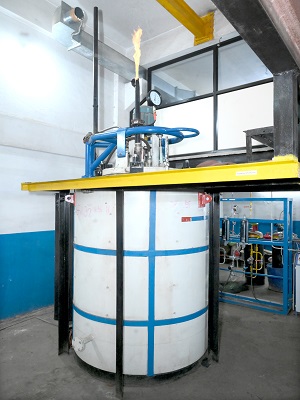- 9890522709
- info@nasametaltreat.com
- Sun - Fri: 9:00 - 19:00 / Closed on Saturday

Gas nitriding is a form of steel heat treatment in which heat diffuses nitrogen-rich gas onto the surface of the metal with the intention of hardening it. The nitride hardening process integrates into the bulk material, allowing the portion of metal below the surface layer to remain soft.
Nitriding is a process for hardening the surface of steel objects by introducing nitrogen (N) into it, where it combines with iron and other alloying elements to form hard metallic nitrides.

Oxidation following gas nitriding or gas nitrocarburizing increases the corrosion resistance of the material. The treatment creates a 1-2 µm thin oxide layer of Fe3O4 (magnetite), which gives the surface an anthracite to black appearance and makes it significantly less susceptible to corrosion.
Gas nitriding disperses gas to the metal via heat in a furnace or sealed atmosphere. Liquid nitriding uses a cyanide salt mixture in a bath. The heat requirements for liquid are lower than for the gas technique, and the hardened compound on the surface of the component is thicker.
Compared with gas nitriding, the deformation of the work piece in soft nitriding is small, the brittleness of the carburized layer is small, but the hardness is low. The deformation of the work piece in ion nitriding is extremely small, and the carburized layer is hard and thick.